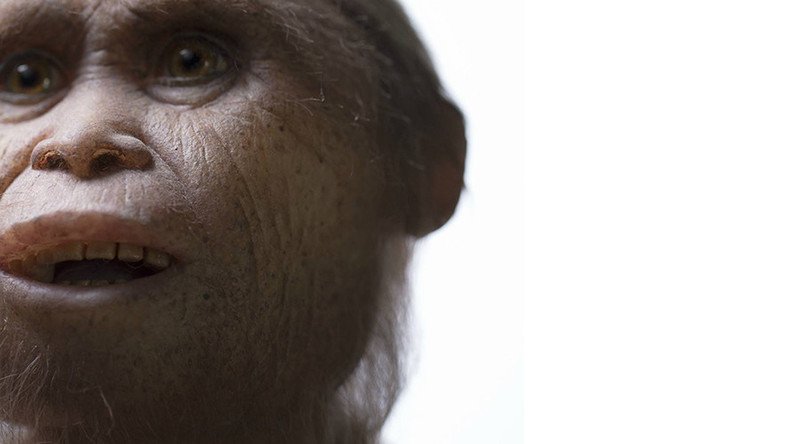700,000-yr-old ‘hobbit’ fossils found on Indonesian island (PHOTOS)

Ancient ‘hobbit’ fossils dating back 700,000 years have been found on the Indonesian island of Flores which could unlock the mystery of the diminutive species’ ancestry.
The ancient dwarf-like human remains are the first found outside Liang Bua cave, the site on Flores where the original ‘hobbit’ fossils were found in 2003. The recent find is more than a half a million years older than the previous discovery.
Bone fragments and teeth, apparently from the extinct Hobbit species called Homo floresiensis, were recovered from an ancient river bed by a team led by paleontologist Dr Gert van den Bergh of Australia’s University of Wollongong.
Remarkable new finds are clues to #hobbit ancestry https://t.co/C0WZ6LK0RFpic.twitter.com/fAyOkd6lFf
— UOW (@UOW) June 8, 2016
A jaw fragment and six teeth from at least one adult and two children were excavated from layers of sedimentary rock at a site named Mata Menge on the island.
It marks the biggest breakthrough since the first ‘hobbit’ remains were found by Professor Mike Morwood and his team in 2003. Further analysis determined that the skeletal remains were from a new species, Homo floresiensis, which was quickly nicknamed ‘Hobbit’ due in part to the popularity of the Lord of the Rings series at the time.
Scientists determined that the skeleton was that of an adult woman. Although initially believed to be around 18,000 years old, new evidence saw the remains’ origin date revised to 50,000 years, a new study in Nature magazine reports.
The discovery sparked debate around the origin of the species, which stood at one metre tall, with some claims that they were in fact humans with a medical condition that caused their small size.
This latest research, published in two articles in Nature, has ruled this out, as well as the possibility the Hobbit evolved from even more ancient members of the human family tree like Homo habilis or Australopithecus.
Remarkable new finds are clues to 'hobbit' ancestry: https://t.co/BdwpdRPNYjhttps://t.co/fmtqUCx6pG
— UOW (@UOW) June 9, 2016
The researchers say it appears to be a dwarfed descendant of the early Asian Homo erectus, and the evidence gathered also suggest the hominins inhabited a savannah-like open grassland habitat with a wetland component.
“The morphology of the fossil teeth also suggests that this human lineage represents a dwarfed descendant of early Homo erectus that somehow got marooned on the island of Flores,” said Dr Yousuke Kaifu of Tokyo’s National Museum of Nature and Science.
“What is truly unexpected is that the size of the finds indicates that Homo floresiensis had already obtained its small size by at least 700,000 years ago,” he added.
The team believes the Homo erectus inhabited the island of Flores 1.5 million years ago and had shrunk to the hobbit size seen at Mata Menge and Liang Bua by 700,000 years ago.
“This find has important implications for our understanding of early human dispersal and evolution in the region and quashes once and for all any doubters that believe Homo floresiensis was merely a sick modern human,” van den Bergh said.
Stone tools from Mata Menge have also been found which are very similar to those discovered at Liang Bua, adding further support to the assertion that the researchers have uncovered a potential hobbit ancestor in the new find.
The team will continue their search for skeletal remains and older fossils at the site in the hope of revealing more conclusive evidence of the “hobbit” species and its evolution.












